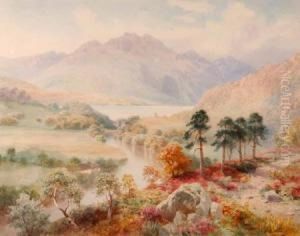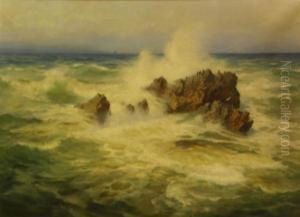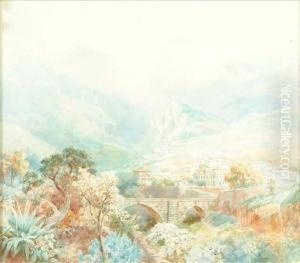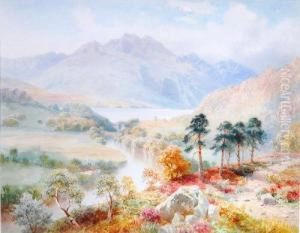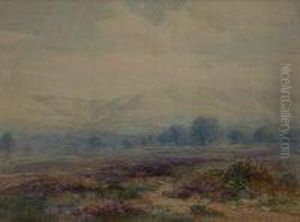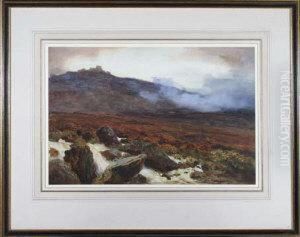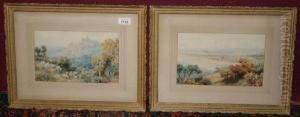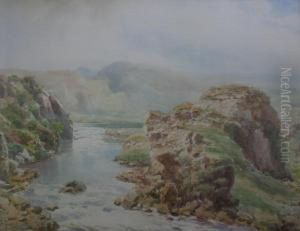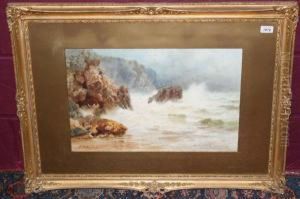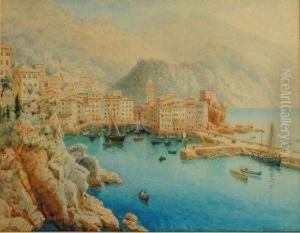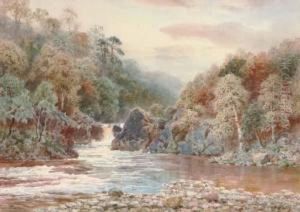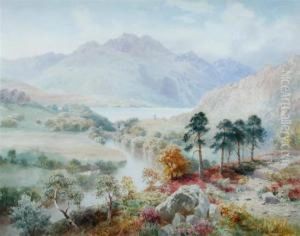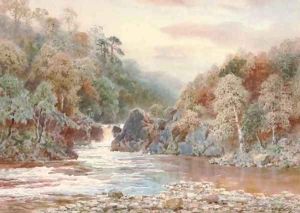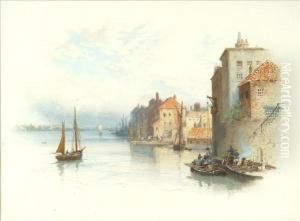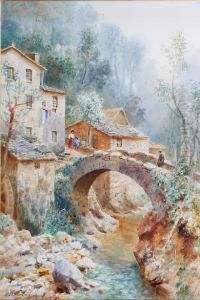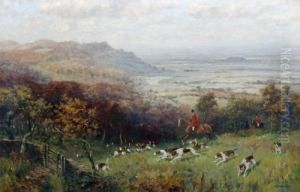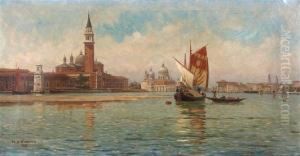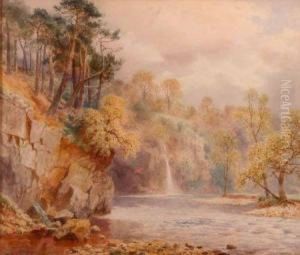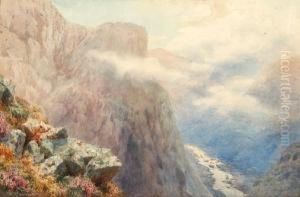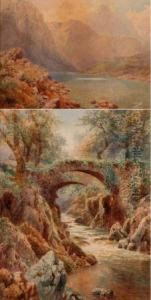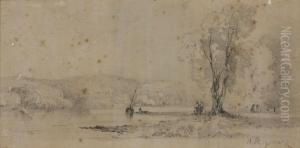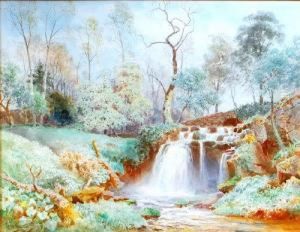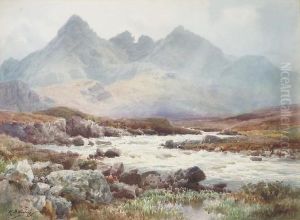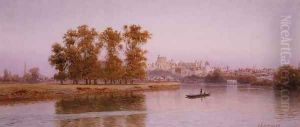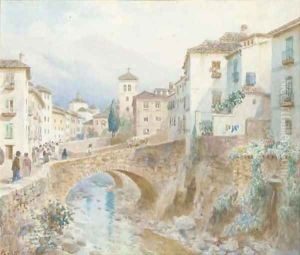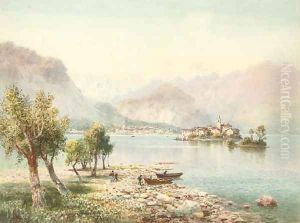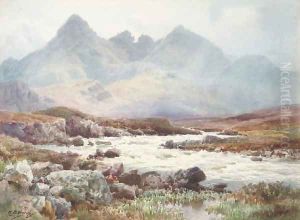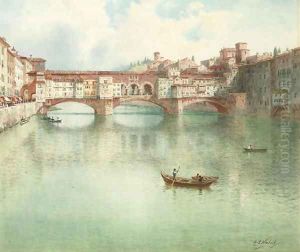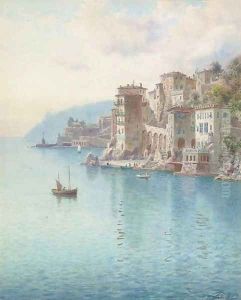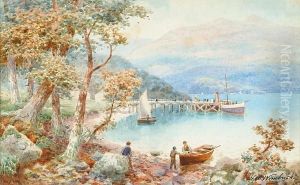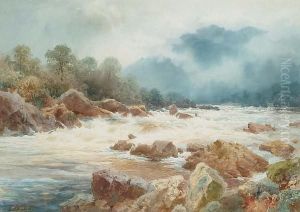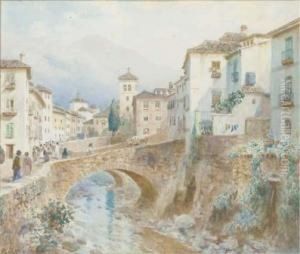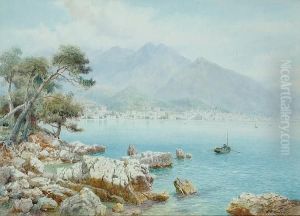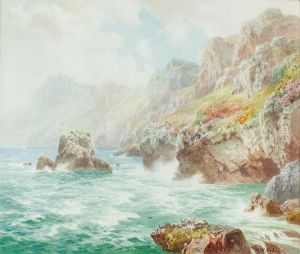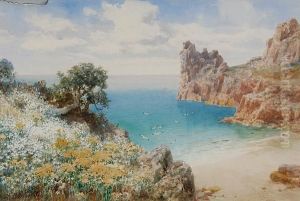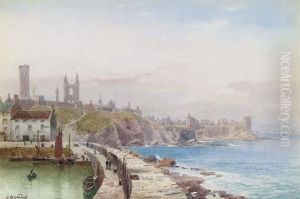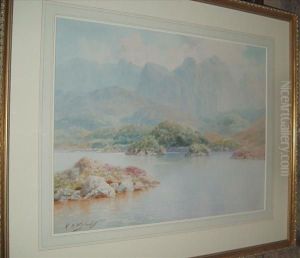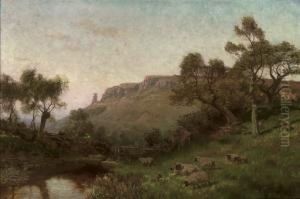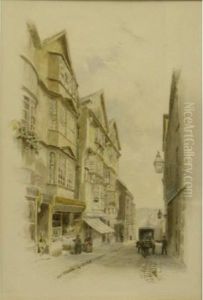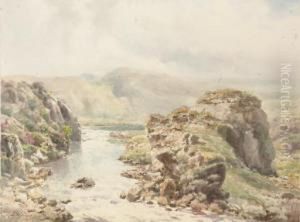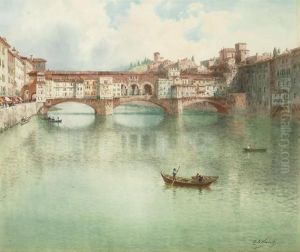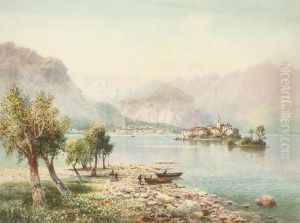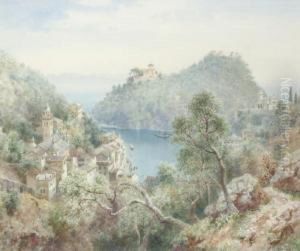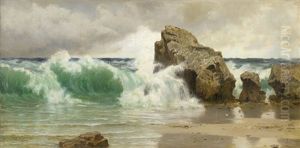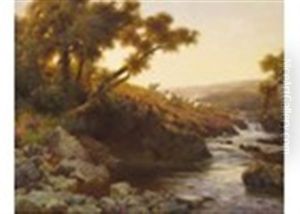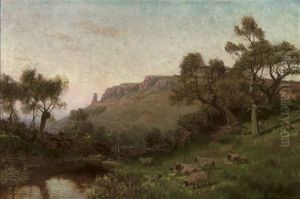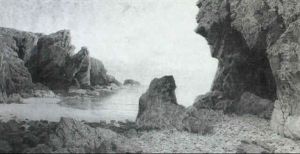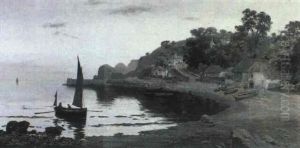Henry B. Wimbush Paintings
Henry B. Wimbush was a British illustrator and watercolour artist, born in 1867. He is known for his distinctive style of painting, which often featured landscapes, townscapes, and coastal scenes. Wimbush was particularly adept at capturing the light and atmosphere of the English countryside, and his works exhibit a keen attention to detail.
During his lifetime, Wimbush produced a large number of paintings and illustrations. He contributed to various illustrated books and periodicals of the time, such as 'The Illustrated London News' and 'The Graphic'. His illustrations were also used in postcards, a popular means of communication in the early 20th century, which helped to disseminate his work widely.
Wimbush traveled extensively throughout the United Kingdom, drawing inspiration from the diverse landscapes and historic architecture. He was proficient in the use of both watercolours and oils, but it was his watercolour landscapes that garnered the most attention and appreciation.
Despite his contributions to the field of illustration and landscape painting, Henry B. Wimbush did not gain the same level of fame as some of his contemporaries. However, his work has been re-evaluated in recent years, and he is now recognized for his technical skill and his ability to evoke the essence of the English landscape.
He continued to work and exhibit his art up until his death in 1943. Today, Wimbush's paintings can be found in various art collections and are sought after by collectors who appreciate early 20th-century British art.
